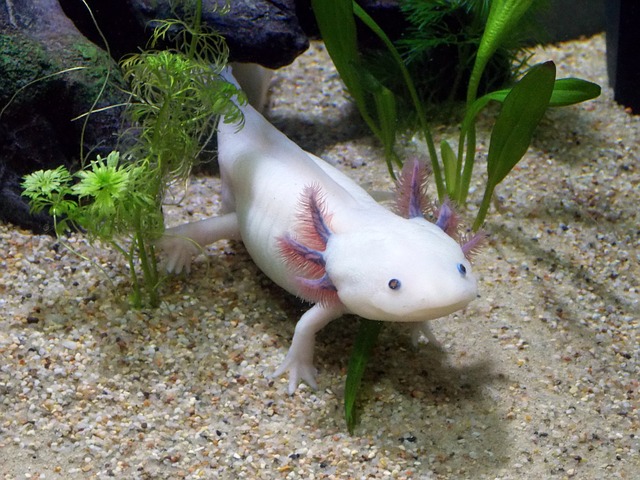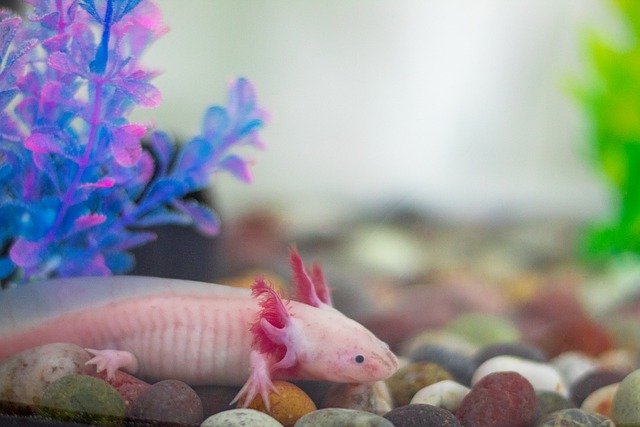
Ambystoma mexicanum is known as axolotl.
Axolotl is a term that comes from the Nahuatl word axolotl . The concept refers to an animal that is endemic to Mexican territory.
Scientifically named Ambystoma mexicanum , the axolotl is an amphibian . This means that it is an aquatic species whose temperature varies and that, in its first stage of life, it breathes through gills, although it later develops pulmonary respiration as it becomes aerial. As the axolotl is part of the urodele amphibians , it maintains its tail and gills in adulthood and has four limbs.
Characteristics of the axolotl
The axolotl can have a length of about 30 centimeters. It does not undergo metamorphosis and retains its larval form for a long time, reaching sexual maturity without losing its larval characteristics.
Similar to a tadpole , although much larger and with legs, the axolotl exhibits three pairs of gills that arise from its head . It has small eyes and is characterized by its smooth skin that can present different shades.
Habitat and food
Axolotls live in shallow canals and lakes with abundant aquatic vegetation. It feeds on crustaceans and fish if it is free, while in captivity it usually eats worms, worms and even raw beef and chicken.
With small teeth in rows and a retractable tongue, the axolotl can hold food but not chew or tear it; therefore, he swallows it whole. When it finds what it wants to eat, it opens its mouth so that the food enters it along with the water.

The axolotl is an amphibian that is in danger of extinction.
The axolotl, in danger of extinction
According to the International Union for Conservation of Nature ( IUCN ), the axolotl is in critical danger of extinction . Therefore, for the IUCN , there is a very high risk of the axolotl disappearing in the wild.
Water pollution and the arrival of exotic fish to its habitat are factors that threaten the subsistence of the axolotl. Also the capture of specimens to use their meat for its supposed medicinal properties and the trade of the animal as a pet affect its survival.
Its importance in Mexican culture
The axolotl always had relevance in Mexican culture. It is mentioned in "General History of the Things of New Spain" , for example , a codex written by Bernardino de Sahagún in the 16th century .
The Mexica already used axolotl as food with the aim of treating various conditions, such as tuberculosis and respiratory tract disorders. Although this practice is maintained in some rural populations, the healing properties of axolotl meat have never been scientifically proven.
Today, the axolotl is considered a pet . It is also taken as a model organism for the development of research.
It should be noted that the axolotl also appears in Aztec mythology, linked to the god Xólotl . According to legend, this divinity tried to avoid death. With this goal, he first transformed himself into a plant but, upon being found, he then turned into an amphibian and continued fleeing.
